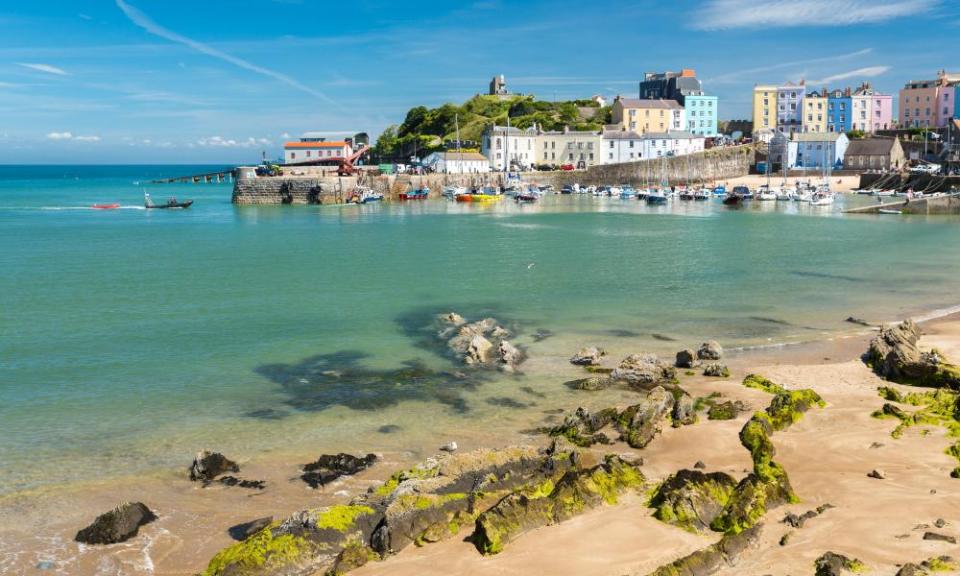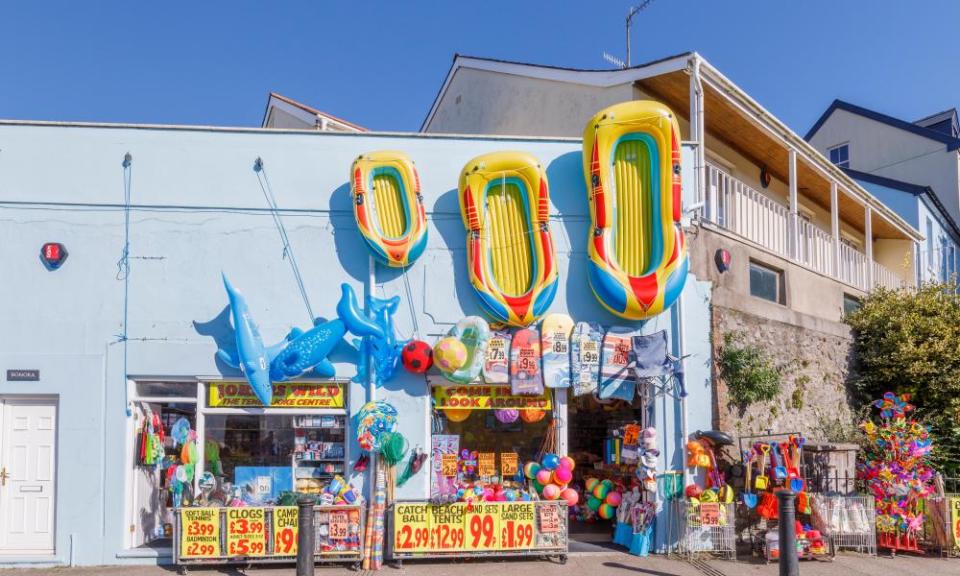A holiday in Tenby still makes me giddy with boyhood excitement

We stopped by the roadside and Dad pumped up his Primus stove to make tea as usual, with tea leaves of course. Teabags were still a novelty in those days. Then, into the layby drove a van hand-painted with flowers. It was 1969 and we were on our way to Tenby; the same summer hippies were heading to see Bob Dylan and the Who at the Isle of Wight festival.
Our car was definitely blue, but was it the Morris Minor or a Ford Cortina? I can’t be sure. Either way, I was a small boy giddy with excitement about going on a summer holiday to the beach. Tenby, I was promised, had a sandy beach, a castle on an island and plenty of caves.
The town was everything I hoped for, and more. Mum was pregnant and Dad was feeling expansive: we ate in a cafe for the first time that I recall – my most vivid memory of the week is the apple pie and ice-cream. The waitress stared in shock when Dad declared he was a vegetarian. “Crikey,” she said loudly. “What’s one of those?” There was much discussion before a salad was pronounced possible. Recipe: one lettuce, one sliced tomato, one bottle of salad cream. The repast, as LP Hartley almost said, was a foreign country.

When I head back to the town 50-odd years later, it seems largely unchanged, at least at first glance. The setting is magnificent, with medieval walls, tightly packed pastel-painted houses, and superb beaches. My childhood eye would never have seen anything less than perfect about such a place, but today there are signs of dilapidation and economic struggle. It was much worse than that when John Wesley came in 1763: he discovered the town mostly empty and ruined, more than a century after plague had wiped out half the population.
Revival came in the early 1800s with William Paxton, spending vast amounts of the fortune he made with the East India Company in Bengal. He built houses, stables, roads, water supply and, most importantly, a bathhouse suitable for the most civilised of gentlefolk. The result was a seaside holiday destination: largely the place that now exists.
That apple pie memory was so vivid that I went to search for the cafe, failing of course, but instead discovering the Stowaway cafe, which is a vast improvement. Tucked away in an old boat store in the arches, facing the beautiful harbour, it’s a superb spot for a cappuccino and a pastry. From there I head into the town, along Upper Frog Street, which is the place to go for your beach and picnic supplies.
In 1969 it was not only vegetarians who struggled. Mum insisted on searching for wholemeal bread, rather than “white stodge”, the only bread available. No longer. Loafley Bakery & Deli near the corner with Bank Lane, is about as close to my dream place for picnic supplies: its “graze boxes” feature nuggets of home-baked breads, quiches, sausage rolls, and cakes, plus olives and other extras.
Food in Tenby, as in the rest of Britain, has been transformed, and that’s mostly for the better (though I’m not including the packaging). In 1969, olive oil was only available in chemists and the quality of beer had hit an all-time low. This was two years before Camra launched its mission to combat tasteless industrialised brewing. Now the Harbwr and Tenby breweries, both in town, both make great beers, and both have fine food outlets – respectively, the Taproom and the Sandbar And Cwlbox.
In 1969, we stayed in a caravan at Lydstep and explored the beaches and coves. For an eight-year-old it was pure magic: the caves at Church Doors beach, next to Skrinkle Haven, were like something out of a Famous Five adventure (my holiday reading), and it remains a wonderful spot.
The coast to the west of Tenby is magnificent all the way to Stackpole Head. To really get into the caves and sea arches, try Tenby Coasteering, or explore the cliffs at places like Penally with Climb Pembroke.

Heading east, Dylan Thomas’s house and writing cabin at Laugharne are wonderful; in fact, the whole village is lovely to stroll around. Brown’s Hotel, Thomas’s favourite pub, is still a great place to stay or simply have a pint. Other worthwhile trips include to St Catherine’s Island with its Napoleonic fort now run by volunteers, and the boat ride over to the monastic settlement on Caldey Island.
Back in 1969, all we had was a week. I can still remember the sense of despair at the thought of leaving, but many other memories are vague and I have to ask my mother, now 87, for help. For example, what was that blue car we were driving? She rings me. “It was a Vauxhall Viva and it was white. I’ve found the receipt.”
Almost instantly my memory of that layby incident is subtly altered: the blue car fades to white. What a wonderfully creative thing is memory. My childhood recollection of Tenby, however, remains untouched by all revisions and revisits, still the epitome of seaside perfection.


